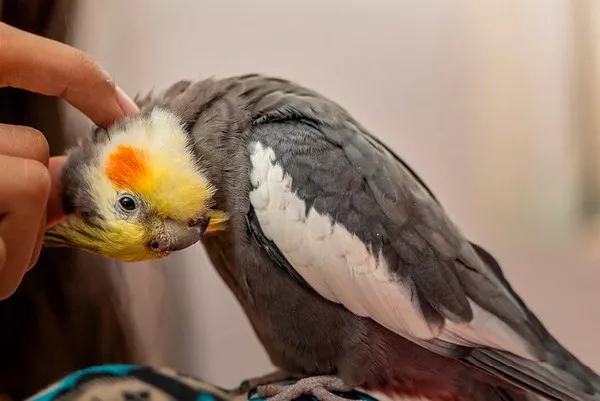Rabbits are adorable, energetic, and social creatures that make great pets for people of all ages. Among the many breeds of rabbits, the Holland Lop is particularly beloved for its cute appearance and affectionate nature. These rabbits are a dwarf breed with floppy ears, giving them a unique look that endears them to owners. However, like all rabbits, the Holland Lop requires a specific diet to stay healthy and happy. Proper nutrition plays a vital role in their overall well-being, influencing everything from their energy levels to their digestive health.
If you’re a new Holland Lop owner or considering adopting one, one of the most important questions you’ll face is, “How much do I feed my Holland Lop rabbit?” In this article, we’ll break down the necessary components of a Holland Lop’s diet, the right portions, and how to ensure they’re getting the nutrition they need to thrive.
1. Understanding the Holland Lop’s Diet
To answer the question of how much to feed a Holland Lop rabbit, it’s essential to understand what makes up a healthy diet for a rabbit in general, and the Holland Lop in particular. Rabbits are herbivores, meaning they eat plant-based foods. However, their digestive systems are specialized and require a high-fiber diet to maintain proper health. Their intestines are designed to process roughage and fiber, which helps in keeping their gut moving and aids in the prevention of digestive issues such as GI stasis (a serious and potentially fatal condition in rabbits).
The Holland Lop, being a small breed of rabbit, has specific dietary needs, though they aren’t drastically different from those of other domestic rabbits. It’s also worth noting that while all rabbits need similar types of food, the portion sizes might vary based on factors like age, weight, activity level, and health status. Let’s break down the key components of a Holland Lop’s diet.
2. Hay: The Foundation of a Holland Lop’s Diet
Hay is the most crucial element in a rabbit’s diet, making up the majority of their daily intake. It is the main source of fiber and essential nutrients that support digestive health and overall well-being. There are different types of hay available for rabbits, and each offers unique benefits:
Timothy Hay: This is the most commonly recommended hay for adult rabbits. It’s high in fiber, which promotes healthy digestion and prevents obesity. Timothy hay comes in various cuts, with first-cut hay being the most fibrous and richest in fiber. Second and third cuts are softer and more fragrant, but still suitable for most adult rabbits.
Meadow Hay: Another high-fiber option that can be offered to rabbits. It’s a mix of grasses and plants found in meadows, and while it’s not as common as Timothy hay, many rabbits enjoy its variety.
Orchard Grass Hay: A soft, sweet-smelling hay that some rabbits prefer over Timothy hay. It’s a great option for picky eaters but should not be the sole type of hay offered.
Alfalfa Hay: Alfalfa hay is rich in calcium and protein, making it more suitable for young, growing rabbits (under 6 months old) rather than adults. Adult rabbits should avoid alfalfa hay because the high calcium content can lead to kidney problems and obesity over time.
For a healthy adult Holland Lop, the majority of their diet should consist of grass hay such as Timothy hay. Ideally, your rabbit should have access to unlimited hay throughout the day. The more hay they consume, the better it is for their digestive system. A lack of hay can result in serious gastrointestinal problems.
3. Fresh Vegetables and Greens
In addition to hay, fresh vegetables and leafy greens are an essential part of a Holland Lop’s diet. These vegetables provide vital vitamins, minerals, and hydration that your rabbit needs to stay healthy. However, not all vegetables are safe for rabbits, so it’s important to know which ones are appropriate.
Here are some of the best vegetables and greens you can offer to your Holland Lop:
Leafy Greens: Romaine lettuce, cilantro, parsley, dandelion greens, and basil are all great choices. Leafy greens are high in fiber and water content, making them excellent for your rabbit’s digestion and hydration.
Cruciferous Vegetables: Broccoli, kale, and Brussels sprouts are also good choices, but they should be offered in moderation. Too many cruciferous vegetables can cause gas or bloating in some rabbits.
Herbs: Fresh herbs like cilantro, mint, basil, and thyme are nutritious and can make excellent snacks for your rabbit. They’re high in antioxidants and other health-boosting nutrients.
Root Vegetables: Carrots can be offered in moderation, but they should not make up a large part of your rabbit’s diet due to their high sugar content. Other root vegetables, such as turnips or parsnips, are safe but should also be given sparingly.
Other Vegetables: Bell peppers, zucchini, and cucumber are all rabbit-friendly vegetables that provide variety and extra nutrition.
When feeding vegetables to your Holland Lop, it’s important to wash them thoroughly to remove pesticides and other chemicals. Introduce new vegetables slowly to avoid digestive upset. Aim to provide a variety of vegetables daily, offering roughly 1 to 2 cups of mixed vegetables per 2 pounds of your rabbit’s body weight.
4. Pellets: A Supplementary Part of the Diet
Pellets can be a useful supplement in your Holland Lop’s diet but should not be the main food source. Pellets are concentrated and typically contain a mix of hay, vegetables, and other nutrients. However, they are not as fibrous as hay and should be given in moderation.
When selecting pellets for your Holland Lop, look for a high-quality, plain pellet without added seeds, nuts, or sugary additives. The pellets should be made primarily from Timothy hay or similar high-fiber grasses. Avoid pellet mixes that contain artificial colors or flavors.
For an adult Holland Lop, the recommended amount of pellets is typically ¼ cup per 4 pounds of body weight. However, this can vary depending on the individual rabbit’s activity level and health. Young rabbits, less than 6 months old, require more pellets to support their growth.
It’s important to remember that pellets are not a substitute for hay. Hay should remain the main part of your rabbit’s diet, and pellets should only serve as a supplement. Overfeeding pellets can lead to obesity, so it’s best to measure portions carefully.
5. Fruits: An Occasional Treat
Fruits can be a delicious treat for your Holland Lop, but they should be offered in moderation due to their high sugar content. While fruit is a good source of vitamins and antioxidants, too much sugar can contribute to weight gain and digestive problems.
Some safe fruits for rabbits include:
- Apples (without seeds)
- Blueberries
- Strawberries
- Pears
- Bananas (in moderation)
- Pineapple (without the core)
Limit fruit to a small amount, around 1-2 tablespoons per day for adult rabbits. It’s also important to introduce new fruits gradually to see how your rabbit responds.
6. Fresh Water
Hydration is a key element of a Holland Lop’s diet. Always make sure your rabbit has access to fresh, clean water at all times. You can provide water using a water bottle with a stainless steel spout or a heavy ceramic bowl, depending on your rabbit’s preference. Some rabbits prefer one over the other, so experiment to see which method works best for your pet.
Change the water daily to ensure that it stays fresh. Dehydration can lead to serious health issues, so providing ample water is essential for your Holland Lop’s well-being.
7. How Much to Feed a Holland Lop Rabbit?
The exact amount of food you should feed your Holland Lop depends on several factors:
Age: Younger rabbits require more food because they are still growing. They need a higher proportion of pellets and a slightly different balance of vegetables. Once they reach adulthood (around 6 months old), the diet should shift more towards hay and less on pellets.
Weight: The weight of your Holland Lop will help determine the amount of food to feed. A general rule of thumb is that you should offer about 1 to 2 cups of fresh vegetables per 2 pounds of body weight. Pellets should be limited to around ¼ cup per 4 pounds of body weight.
Activity Level: More active rabbits may require slightly more food to maintain their energy levels, while less active rabbits might need smaller portions to avoid obesity.
Health: If your Holland Lop has any health issues, you may need to adjust their diet. Always consult with a veterinarian if you’re unsure about how much food your rabbit needs.
As a rough guide, here’s a breakdown of what a healthy adult Holland Lop might eat daily:
Hay: Unlimited, fresh, and high-quality hay such as Timothy hay.
Vegetables: 1-2 cups of fresh, mixed vegetables per 2 pounds of body weight.
Pellets: About ¼ cup of pellets per 4 pounds of body weight.
Fruit: 1-2 tablespoons of fruit (only as a treat).
Water: Fresh water available at all times.
8. Special Dietary Considerations
Certain factors may require special dietary considerations for your Holland Lop. For example:
Overweight Rabbits: If your Holland Lop is overweight, reduce the amount of pellets and fruits they receive. Increase the amount of hay and vegetables, and ensure they are getting plenty of exercise to help them lose weight.
Dental Health: Rabbits are prone to dental issues, so it’s important to provide plenty of hay to help wear down their teeth naturally. Chew toys made of safe materials can also help maintain healthy teeth.
Senior Rabbits: Older rabbits may have different dietary needs due to a slowing metabolism or dental problems. Consult your vet for specific guidance on feeding older rabbits.
9. Monitoring Your Holland Lop’s Health
As you feed your Holland Lop, it’s important to keep an eye on their weight, fur condition, and overall health. Regularly check their teeth, nails, and ears. If you notice any signs of weight loss, lethargy, or changes in their eating habits, it’s time to consult a veterinarian. An unhealthy diet can lead to many health issues, such as obesity, kidney problems, or gastrointestinal stasis.
Conclusion
Feeding a Holland Lop rabbit the right amount and type of food is essential for their health and happiness. Their diet should primarily consist of high-quality hay, supplemented with fresh vegetables, a limited amount of pellets, and occasional fruits. By providing the right portions and ensuring they have fresh water available at all times, you’ll help your Holland Lop lead a long, healthy life.
Remember, every rabbit is unique, so it’s important to adjust portions based on your pet’s specific needs, age, and activity level. By following these guidelines, you can ensure that your Holland Lop gets the nutrients they need to thrive!
Related Topics:

























